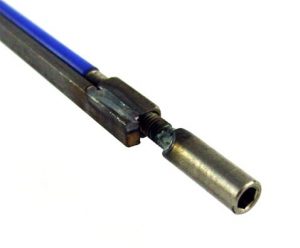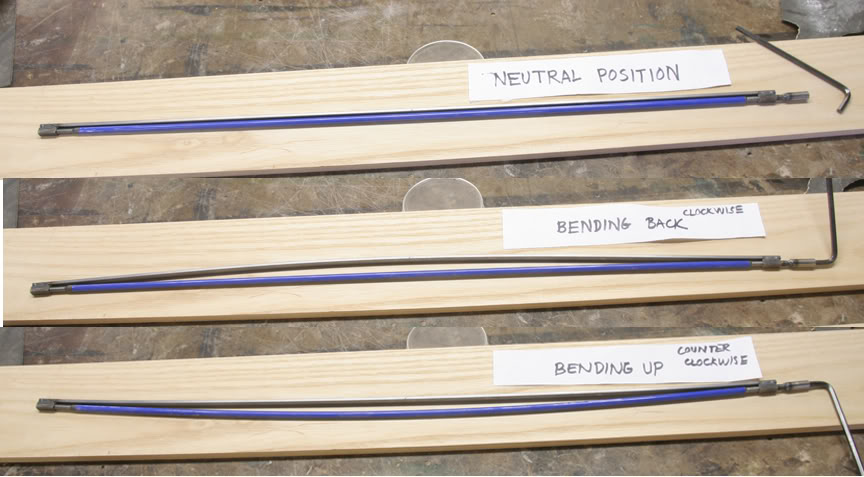In this blog post I’ll explain the working principle behind the truss rod. What actually happens when you decide to adjust your truss rod? Why does it affect the shape of your neck?
Let me start by showing you what a truss rod looks like, since it’s normally well hidden in the neck of the guitar!

What we’re seeing is one of the most common truss rod types, the dual action truss rod, that’s also used for most C# guitars. Dual action indicates that this type of rod allows you to bend the neck both forward and backward.
The truss rod consists of a rectangular metal rod that goes closest to the fretboard, and a round rod that sits directly next to it. In a dual action truss rod, the round rod has threaded parts on both sides of the truss rod. They sit inside two nuts that are welded to the rectangular rod. The thread closest to the adjustment socket is left handed, while the thread on the other side of the truss rod is right handed. This makes that turning the allen key clockwise shortens the round part of the rod. Pressure and a small torque are created on the rectangular rod, which makes it bulge away from the round rod.
Since the rod fits snugly in a pocket inside the neck, the neck is pushed in the same shape. Thus, turning the allen key clockwise creates a backbow in the neck. The neck bends back, towards the player.
When the allen key is turned counter-clockwise, the round rod lengthens with respect to the rectangular rod, which creates the opposite effect. Now the round rod starts to bulge away from the rectangular rod. The neck moves away from the player. This way a backbow in the neck can be eliminated.
Would you like to have something clarified about this post, or are you wondering how something else works exactly, let me know in the comments!

Carlos December 23, 2018
Excellent explanation!
Geir Kråkenes February 16, 2019
Exxelent explanation, but im still a bit confused regarding the thread direction you explained. Normal threads are “right-handed”, or am I wrong? (most people are “right-handed”) The image at the adjust-end shows a “right-handed thread” to me. If I am right, a clockwise rotation of the trussrod adjuster, will try to expand the space between the welding points. If turned counter-clockwise, the adjuster will try to make the distance between the weldingpoints shorter. The big question to me is, how are the trussrod placed in the neck? Wich part is closest to the fingerboard?
Sies - C# Customs July 8, 2019 — Post Author
Hi Geir,
Sorry for the late reply. Right-handed is normal thread, you’re right. But, the thread on the adjustment end is left-handed on the truss rods I’ve used. That should explain it for you.
The truss rod is placed with the rectangular rod on the side of the fretboard.
Sies